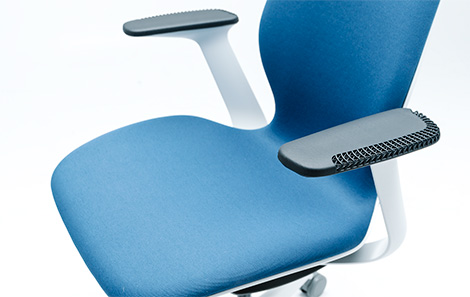
Carbon, Fast Radius and Steelcase have worked on a custom arm rest cap for the SILQ chair, combining four parts into one and reducing material usage by nearly 70%
The use of 3D printing has been used to accentuate the design of office furniture manufacturer Steelcase’s SILQ chair armrests, combining creative customisation with rapid a design-to-manufacturing process.
Fast Radius, a 3D printing bureau with three bases across the USA, worked on designing the armrest with 3D printing vendor Carbon’s engineers to print the custom arm cap – using the exercise to explore how additive manufacturing could improve the product development process and differentiate its products in the market, while also greatly reducing the time it took to bring the product to life.
“The additive manufacturing process meant Steelcase could go through as many redesigns as needed to get it right,” said Fast Radius CEO Lou Rassey. “In this instance, we went from the initial idea with around 100 variables and produced over 12 unique designs in just 8 weeks.”

Consumer personalisation is fundamental to Steelcase’s vision for the SILQ, as every part of the chair is designed to react intuitively to an individual person’s body and movements.
The armrest was designed in four zones that provided different attributes based on how a person’s arm might interact with it.
Although each zone was designed separately, Carbon’s 3D printing technology enabled Fast Radius to print the entire armrest as one cohesive part, with a use of lattices reducing material usage by up to 70 per cent without sacrificing performance.
“Ever since SILQ first debuted, we have continued to experiment with enhancements to the chair’s design, living up to our reputation of pursuing innovation,” said Bruce Smith, Steelcase director of global design. “The additive manufacturing processes from Fast Radius and Carbon enabled us to streamline the already-unique aesthetics of the chair with a lattice structure that also condensed three parts into one.”






